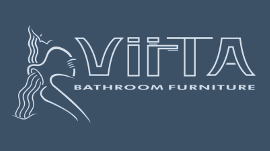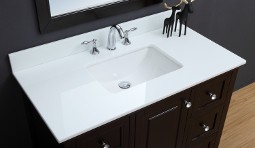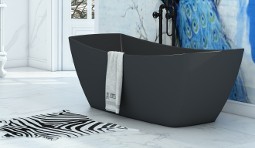
When you’re in shopping mode for a new toilet, remember that this is one plumbing fixture you depend on for reliability, especially in a large household—and it should last a decade or more without much maintenance. The best toilets also save water while still delivering worry-free performance.
Game of Thrones
Flushing Out Best Performance
Top performers leave the bowl pristine, and carry waste far down your drain pipe, reducing the likelihood of clogs.
Water-Saving Technology
More water flushed sometimes (but not always) means more complete flushing. But toilets flush away about 30 percent of all residential water in U.S. homes, so it's not surprising that water conservation has become a serious concern. A 1995 U.S. Department of Energy requirement limits new toilets to 1.6 gallons per flush.
Get the Right Size Toilet for Your Space
Narrow your shopping options by making sure the new toilet matches the existing toilet’s “rough-in” measurement—the distance from the wall to the center of the toilet flange (the hold-down bolts). A measurement of 12 inches is standard, but 10-in. and 14-in. models are also available. "Comfort height" toilets, which sit about 17 to 19 inches high, or about two or three inches higher than usual have become the most common choice. The added height makes getting on and off easier.
Toilets By Type
While there are many features to consider when buying a toilet including height, bowl shape, color, style, and flushing technology, most toilets fall into two basic types: gravity feed and pressure assisted. Gravity feed toilets dominate the market, but pressure assist can be a worthy consideration.
Gravity-Feed Toilets
As their name implies, these toilets have a flush valve that relies on gravity. Water drops from the tank into the bowl to move waste down the drain. They can work with as little as 10 pounds per square inch of household water pressure. Models with a beefy 3- 3 1/2, even 4-inch wide flush valve deliver more thrust than those with a 2- to 2 1/2-inch valve. You can ask to see the manufacturer's specifications for the flush valve.
Pros: Gravity-feed toilets flush more quietly than pressure-assisted models. Many work every bit as well as the best pressure-assisted models, and with far less fanfare—an advantage in close quarters.
Cons: Models that perform comparably to pressure-assist units typically cost as much, while lower-priced models may not be able to properly displace waste.
Pressure-Assisted Toilets
As water compresses air within the sealed tank, it creates pressure that thrusts waste forcefully down the waste line. A pressure-assisted toilet is an especially good choice for large families, but it does have a noisier flush.
Before buying, be sure that your home has at least 25 pounds per square inch of water pressure, the minimum required for a pressure-assisted toilet to work properly. You can check with a $10 gauge that connects to an outdoor spigot.
Pros: The pressure-assisted toilets dispatch solid waste with few clogs.
Cons: These toilets are noisy; the loudest ones emitted an emphatic whoosh. They can be expensive.
A Royal Flush of Features
Once you decide on the basic design you want to install, there are some important toilet features to consider before you buy.
Dual-Flush Technology
Two buttons on the tank let you select a partial flush for liquid waste and a full flush for solid waste. The best models effectively flush solid waste in their full-flush mode and leave no trace of liquid waste in partial-flush mode. But other dual-flush models lack power, so you could end up having to flush twice. Some WaterSense models combine high efficiency with dual flush.
Seat Height
Unlike standard bowls, whose rim stands about 14 or 15 inches above the floor, most "comfort height" toilets are 17 to 19 inches high. Some people find them more comfortable to use, as the added height makes it easier to get on and off the throne.
Bowl Shape
A round bowl takes up less room than an elongated one. But an elongated bowl allows more seating room and more comfort for some users. Compact elongated bowls, offered by some manufacturers, offer an elongated bowl shape that fits in the space of a round-bowl toilet.
Visible, Concealed, or Skirted Trapways
Trapways, those visible bends on the back of the toilet behind the bowl are often hard to clean. Toilets with concealed trapways feature a smooth surface where the trapway would appear. Skirted trapways have a clean line from the front to the back of toilet. Both make cleaning the toilet base easier, and offer a sleeker appearance.
One-Piece or Two-Piece Design
About four out of five toilets sold are two-piece models, with a separate tank that bolts onto the bowl. These tend to cost less than a one-piece design. But they can be harder to keep clean because the seam between the tank and bowl can trap grime.
Touchless Flushing
Using sensors, touchless technology lets you flush your toilet with the wave of a hand. It's available on some toilets, or you can buy a retrofit kit—though the retrofit can't be used on all toilet models.
Noise Level
Consider the bathroom's location. If it's near a kitchen or other living area, or if your home is small, you'll probably appreciate a relatively quiet toilet that doesn't broadcast every flush. Noise levels of the gravity-feed models range from good to excellent; those for the pressure-assisted models range from fair or poor.
Color
More and more models are available in exotic hues such as glacier blue and peach bisque, but 85 percent of buyers still pick white. Choose color with caution. As with avocado green and harvest gold, some colors may soon go out of fashion and can make your bathroom look dated.
Water Supply Lines
Replace rigid chrome-plated copper lines with braided, flexible stainless steel. In addition to easing future repairs, these lines help minimize leaks. If you don't already have one, install a water shut-off valve so you can stop an overflowing toilet without having to shut off water to the whole house.
Source: https://www.consumerreports.org/cro/toilets/buying-guide/index.htm

































